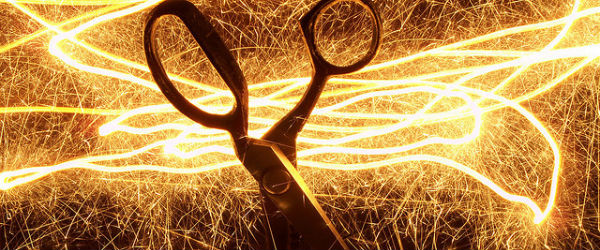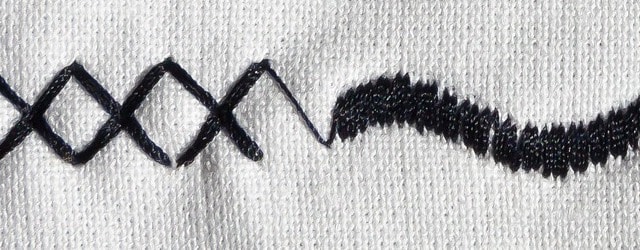Blunt-end cloning involves the ligation of DNA fragments – usually between a plasmid vector and an insert – whose terminal ends are not “sticky”.
Performing these ligations is notoriously difficult, particularly with large DNA fragments. But it is possible. And in this article I’ll give you some tips that I hope will increase your chances of success.
This type of ligation can be up to 100 times slower (i.e. less efficient) than their sticky-end counterparts, resulting in fewer colonies, and with nothing to force directional insertion of the insert, a proportion of colonies will always incorporate the insert in the wrong orientation.
Despite the problems, blunt-end ligations are worth the effort because – since they don’t require compatible restriction sites – they are extremely versatile so can get you out of a lot of sticky situations in your cloning (pun intended).
Some tips for taming blunt-end ligations
Blunt end cloning reactions are less efficient (compared to sticky end ligations) because of the absence of the hydrogen bonding from sticky ends. This absence means that the interactions between the vector and insert ends is fleeting (look here for an explanation on how ligation works) so, a successful ligation relies on a transient association between 5’ phosphate and 3’hydroxyl groups, caught at exactly the right time by the ligase.
Tip 1: Increase concentrations of insert and ligase
So tip 1 is to increase the concentrations of the insert and ligase as this This effectively increases the likelihood of collisions between the vector and insert ends.
Tip 2: Perform the reaction in two steps
Tip 1 works up to a point. But if you increase the insert and ligase too far you then start to generate constructs with concatamers (multiple inserts). This is because the ligation reaction occurs in two steps:
1. Ligation of one vector end with one insert end (which, as noted above, is relatively unlikely to take place – so the likelihood is increase by higher insert and vector concs)
2. Intramolecular association of the other end of the vector and insert (which is very likely to take place)
If the insert and ligation concentrations are so high that the first reaction is very favored, then it is likely happen over and over within the same molecule – producing concatamers. So the second tip is to beware of raising the insert and vector concentrations too high!
Another way around this is to perform a short 1hr incubation with a high concentrations of insert (favoring reaction 1), then dilute the reaction 1:20 with ligase buffer and continue the reaction for several more hours to allow reaction 2 to occur (thanks to good old Sambrook et al for this one!)
Tip 3: Use longer incubation times
Allowing the ligation reaction to occur over a longer period – up to 24 hours – again increases the probability of two blunt ends bumping into each other and being joined by the ligase. So can make a less favoured reaction more likely to happen
Tip 4: Take care of how you produce the blunt ends
If your plasmid/vector is prepared with a restriction enzyme that creates sticky ends, it can be blunted using T4 DNA polymerase or the Klenow fragment. But since this introduces an extra step – and therefore extra uncertainty, this should only be used as a last resort. A better approach is to use an enzyme that produces a blunt end directly (e.g. Sma I, Dpn I, Pvu II, Eco RV) then if you verify the digest, you know that you have a blunt end.
On a related note, PCR-generated DNA fragments are always blunt ended, and may be used directly in blunt-end ligations – unless you use Taq polymerase. Taq adds an extra adenine to the 3’ end of the PCR product, so you’ll need to at a bit of 3′-5′ exonuclease activity (e.g. from a spot of Pfu) to blunt the ends. Again this adds another step and more uncertainty, so is not ideal.
Tip 5: Dephosphorylate the vector
If both ends of the fragment to be ligated into a vector are blunt-ended, then the vector needs to be dephosphorylated to minimise self-ligation. A number of enzymes are available for this step, including shrimp alkaline phosphatase (SAP), calf intestinal phosphatase (CIP) or bovine alkaline phosphatase (BAP)
Tip 6: … and phosphorylate the insert
If the vector needed to be dephosphorylated, as ligation requires the presence of a 5′-phosphate, the insert must be phosphorylated. This can be done by treatment with T4 polynucleotide kinase.
Tip 7: Use a PEG-rich ligation mixture
The theory goes that polyethylene glycol (PEG) “increases” the concentration in the sample by occupying space in the solution. This means the reagents have less space to move about, increasing the likelihood that blunt ends will meet. (Although not without checking this article for some caveats!)
Tip 8: Not working? Make sure it is the ligation that is the problem!
If your blunt ended cloning refuses to work, it is all to easy to jump to the conclusion that it is the “difficult” ligation that is the problem. But of course, as with any ligation, you need to have a comprehensive set of controls to let you understand where things are going wrong. This article provides an overview of the controls you need.
Tip 9: Persevere!.. to a point
If it doesn’t work first time, try and try again. But if it does not work a third time – and the controls tell you it is the ligation that is the problem – then you make need to reconsider your strategy.
Tip 10: Go around the problem
If you can’t resolve your blunt-end ligation problem – and you have no other way to get the construct you want – a bit of re-engineering may be in order. For example, if you’re going blunt because your plasmid’s multiple cloning site doesn’t have a suitable sticky-ended site for your insert – you can easily add in a new site using something like quikchange. There is always another way!
Good luck with your blunt end ligations — let us know how they go!






